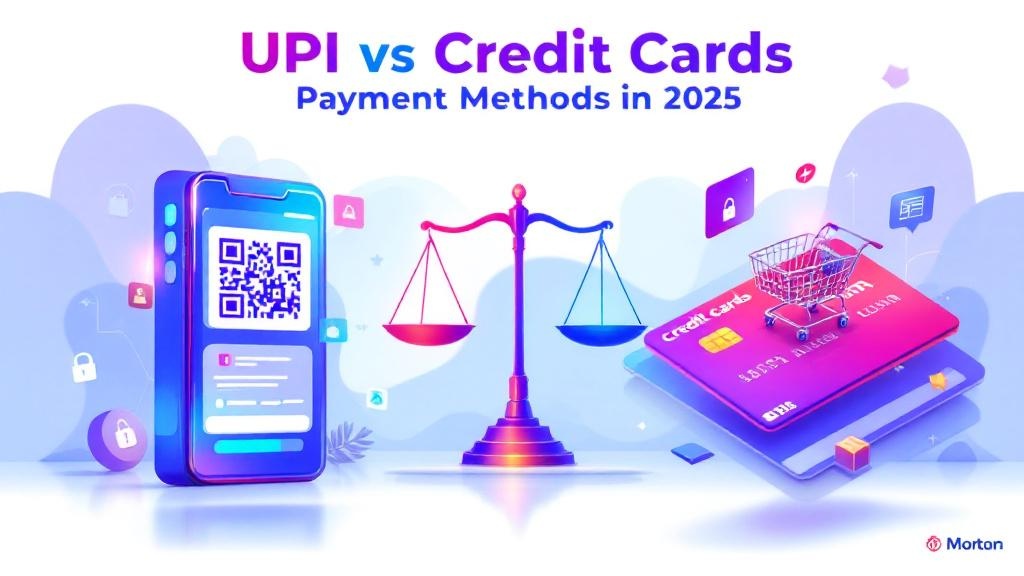In recent years, digital payments have transformed the way we handle financial transactions in India. Two of the most popular methods today are UPI (Unified Payments Interface) and credit cards. As India continues to embrace cashless payment systems, understanding the differences between UPI and credit cards is crucial for consumers. Both have their unique advantages, but with evolving trends in technology, security, and convenience, which one should you choose in 2025? Let’s dive deep into the UPI vs Credit Cards debate.
The Rise of Digital Payments in India
India has witnessed a massive digital revolution, driven by government initiatives like Digital India and the introduction of UPI. According to reports, UPI has gained significant traction since its launch in 2016. The National Payments Corporation of India (NPCI), the organization behind UPI, has played a pivotal role in making UPI the go-to digital payment option for millions of Indians.
On the other hand, credit cards have been a staple in the Indian payment landscape for decades. While their adoption has been steady, recent trends indicate that UPI is fast catching up due to its ease of use, accessibility, and cost-effectiveness.
So, how do these two payment methods compare in 2025?
UPI vs Credit Cards India: Key Differences
1. Ease of Use
UPI’s biggest advantage lies in its simplicity. With UPI, users can instantly send and receive money using just a mobile number or a QR code. There’s no need for a physical card or PIN. Simply open your UPI-enabled app (like BHIM app, Google Pay, PhonePe), enter the amount, and authenticate via a fingerprint or PIN.
Credit cards, on the other hand, require you to swipe, insert, or tap your card on a payment terminal. The process may involve a PIN entry or signature, adding an extra layer of complexity compared to UPI.
2. Security
When it comes to security, UPI is extremely secure with two-factor authentication (2FA). You’re required to enter your UPI PIN after selecting the recipient and amount. This ensures that only authorized users can make payments.
Credit cards also offer high security, but they are more susceptible to fraud, especially in case of lost or stolen cards. Many credit cards offer two-factor authentication for online transactions, but still, the risk is higher than UPI’s PIN-based system.
3. Transaction Speed
UPI’s speed is one of its strongest selling points. Transactions are completed in real-time, and money is transferred instantly. In contrast, credit card payments, especially for online transactions, can take a few minutes to process.
However, for large-ticket purchases, credit cards offer the advantage of a buy-now-pay-later option, which can be useful for individuals who may not have the full amount upfront but can pay in installments.
4. Fees and Charges
One of the most important factors when choosing a payment method is the cost.
UPI: Transactions are generally free. There’s no fee for sending or receiving money, making it one of the most affordable payment methods in India. However, there might be a nominal fee for certain services, such as bill payments or mobile recharges.
Credit Cards: Credit card usage often comes with a host of fees, such as annual fees, late payment charges, and interest rates (which can be as high as 40% per annum). Additionally, cash advances on credit cards attract a higher interest rate, and using a credit card internationally could incur foreign transaction fees.
5. UPI vs Credit Cards: Cashback and Rewards
Another key difference lies in the reward system. Credit cards often offer various rewards for purchases, such as cashback, airline miles, or shopping points. This is particularly beneficial for frequent shoppers or travelers.
On the other hand, UPI transactions do not offer a reward system as comprehensive as credit cards. However, several UPI apps like PhonePe and Google Pay offer cashback on certain transactions, especially during promotions or festivals. Although these cashback offers are more limited than credit card rewards, they are a decent incentive.
6. Credit Card Interest Rates in India
Credit card interest rates can vary between 13% and 40% annually, depending on the provider. This is one of the main drawbacks of credit cards in India. If not paid off in full each month, the interest can accumulate quickly, leading to high debt levels.
In contrast, UPI does not carry interest charges, making it a much safer and more cost-effective option for users who tend to spend within their means.
7. Daily Transaction Limits
UPI allows a daily transaction limit that can range from ₹1 lakh to ₹2 lakh, depending on the bank. This makes it suitable for most small-to-medium-sized transactions. However, large purchases or business payments might be restricted under UPI limits.
Credit cards typically come with higher credit limits, and some premium cards allow higher transaction limits. These limits are determined by your creditworthiness and credit score.
UPI Advantages and Disadvantages
Advantages of UPI
Instant Transfers: Money is transferred immediately, without any delays.
Low-Cost Transactions: No hidden fees for sending or receiving payments.
Highly Secure: UPI’s two-factor authentication ensures maximum security.
Wide Acceptance: UPI is widely accepted across India, including at small retailers, which increases its utility.
Disadvantages of UPI
Transaction Limits: Limited by daily transaction caps (₹1 lakh – ₹2 lakh).
No Credit Facility: Unlike credit cards, UPI doesn’t offer a credit facility for deferred payments.
Requires Internet Connectivity: A stable internet connection is required for UPI transactions.
Credit Cards: Key Benefits and Drawbacks
Benefits of Credit Cards
Credit Facility: Credit cards allow you to buy now and pay later, which can help manage short-term cash flow.
Rewards and Cashback: Most cards offer reward programs, cashback on specific categories, and exclusive offers on shopping, dining, and travel.
Higher Transaction Limits: Credit cards often have higher limits than UPI, making them ideal for large purchases.
Drawbacks of Credit Cards
High Interest Rates: If not paid in full, credit card balances can accrue significant interest.
Annual Fees: Credit cards often come with an annual fee, which can be steep depending on the type of card.
Debt Risk: Mismanagement of credit card payments can affect your credit score, leading to long-term financial issues.
FAQs: UPI vs Credit Cards
1. Is UPI safer than credit cards?
Yes, UPI is considered safer because of its two-factor authentication system. While credit cards also offer security features, UPI’s use of a PIN for every transaction adds an extra layer of protection.
2. Can I earn rewards on UPI payments?
While UPI doesn’t offer reward points like credit cards, many UPI apps do provide cashback on selected transactions, especially during promotions.
3. What is the best payment method in India for 2025?
Both UPI and credit cards have their place in India’s financial landscape. For everyday small transactions, UPI is ideal. For larger purchases or when you need credit flexibility, credit cards might be more beneficial.
4. How do credit card fees compare to UPI fees?
UPI is mostly free, whereas credit cards come with annual fees, interest charges, and late payment penalties, making UPI a more cost-effective option for many users.
5. Are QR code payments safe in India?
Yes, QR code payments via UPI are secure due to the encryption and PIN-based verification system. However, it’s essential to ensure that you’re scanning official and verified QR codes.
6. What impact does credit card usage have on my credit score?
Credit card usage can impact your credit score positively or negatively depending on how well you manage payments. Regular on-time payments will help improve your score, while missed payments can lower it.
Conclusion
In conclusion, the battle between UPI vs credit cards in India isn’t about which is superior but about which suits your individual needs. UPI shines with its instant transfer speed, low cost, and security, making it the preferred choice for small, everyday transactions. On the other hand, credit cards offer higher transaction limits, the flexibility of credit, and lucrative rewards programs, making them ideal for larger purchases and frequent travelers.
Ultimately, the best choice depends on your financial goals and habits. Whether you’re looking for a quick and cost-effective way to send money or need a tool to manage big-ticket purchases, both UPI and credit cards have their role in India’s vibrant payment ecosystem in 2025.








Comments (0)